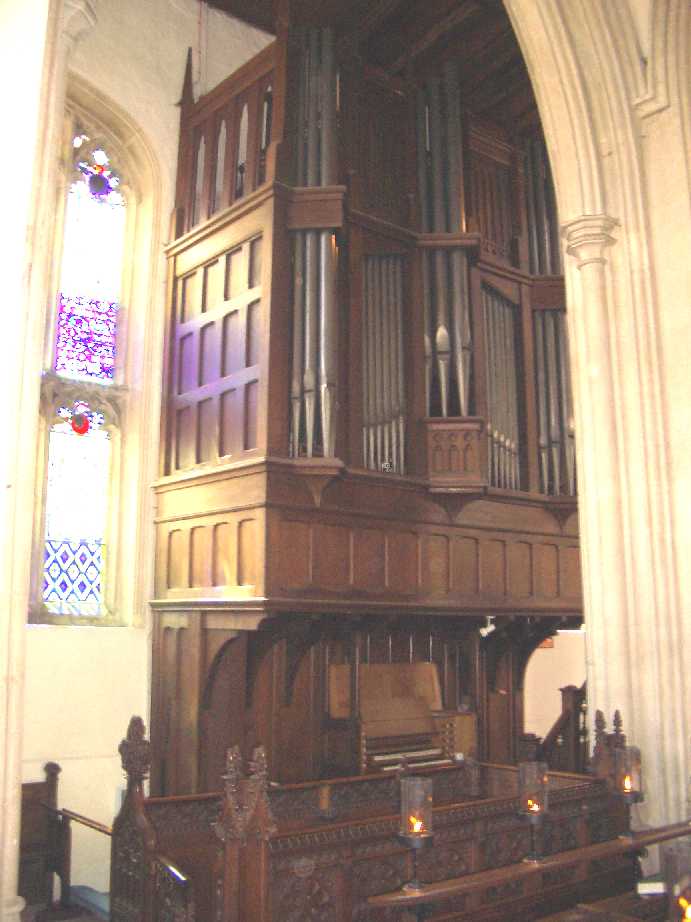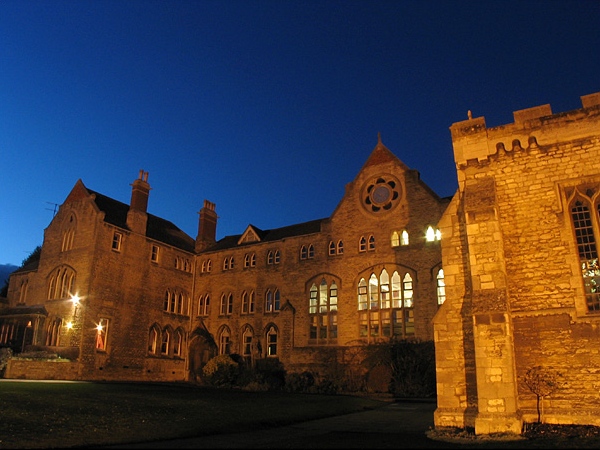|
Robert Browne (Brownist)
Robert Browne (1550s – 1633) was the founder of the Brownists, a common designation for early Separatists from the Church of England before 1620. In later life he was reconciled to the established church and became an Anglican priest. Biography Browne was born at Tolethorpe Hall in Little Casterton, Rutland, England, about 1550,Robert Browne of Lilford Lilford Hall, accessed 20 November 2020 and was the third of seven children of Anthony Browne and his wife Dorothy, a daughter of Sir Philip Boteler. In 1572 he graduated from . It was probably while Browne was at Corpus Christi that he first met [...More Info...] [...Related Items...] OR: [Wikipedia] [Google] [Baidu] |
Brownists
The Brownists were a Christian group in 16th-century England. They were a group of English Dissenters or early English Dissenters#Puritans, Separatists from the Church of England. They were named after Robert Browne (Brownist), Robert Browne, who was born at Tolethorpe Hall in Rutland, England, in the 1550s. The terms Brownists or Separatists were used to describe them by outsiders; they were known as Saints among themselves. A majority of the Separatists aboard the ''Mayflower'' in 1620 were Brownists, and the Pilgrims (Plymouth Colony), Pilgrims were known into the 20th century as the Brownist Emigration. The Brownists were eventually absorbed into the Mennonites, Mennonite Church, while others joined the Baptists, Baptist Church. Origins There had been early advocates of a Congregationalist polity, congregational form of organisation for the Church of England in the time of Henry VIII of England, Henry VIII. It became clear that the English government had other plans on the ... [...More Info...] [...Related Items...] OR: [Wikipedia] [Google] [Baidu] |
St Martin's Church, Stamford
St Martin's Church, Stamford, is a Grade I listed parish church in the Church of England located in Stamford, Lincolnshire, Stamford, Lincolnshire, England. The area of the town south of the River Welland was in Northamptonshire until 1889 and is called Stamford Baron St. Martin, Stamford Baron or St Martin's. History A church was first erected here between 1133 and 1147 by Martin de Vecti (also known as Martin de Bec), Abbot of Peterborough from 1133 to 1155. He dedicated the church to the saint whose name he held. It is thought that the church may have been damaged in Wars of the Roses by Lancastrian forces in 1461. By 1473 it was reported as being in a ruinous state. Rebuilding was started in 1482, and completed in 1485 in the Perpendicular style. The majority of the mediaeval coloured glass was bought by the Earl of Exeter from the Church of the Holy Trinity at Tattershall in 1754. The church was re-ordered in 1843 by Edward Browning when new pews and a new pulpit were ... [...More Info...] [...Related Items...] OR: [Wikipedia] [Google] [Baidu] |
Achurch
Achurch (formerly Asenciran sometimes referred to as Thorpe Achurch) is a village in the civil parish of Thorpe Achurch, in North Northamptonshire, England. Situated on a small rise above the River Nene, 5 miles South of the market town of Oundle, the population of the civil parish of Thorpe Achurch at the 2011 census was 421. The parish includes the Grade I listed property Lilford Hall and the Grade II* listed Church of St. John the Baptist, an early and late 13th-century Anglican church restored and enlarged by architect William Slater in 1862. History The villages name means 'Asa's church' or 'Asi's church'. Settled successively since the Iron Age the village was named after the site of the nearby church as ’Aas-kirk’, meaning Church by the Water. Subsequently named Asechirce in the Domesday Book of 1086 with land held mainly by Ascelin de Waterville, a Norman knight after whom the adjoining village of Thorpe Waterville is named. Ownership of the land passed through ... [...More Info...] [...Related Items...] OR: [Wikipedia] [Google] [Baidu] |
Bishop Of Peterborough
The Bishop of Peterborough is the ordinary of the Church of England Diocese of Peterborough in the Province of Canterbury. The diocese covers the counties of Northamptonshire (including the Soke of Peterborough) and Rutland. The see is in the City of Peterborough, where the bishop's seat (''cathedra'') is located at the Cathedral Church of Saint Peter, Saint Paul and Saint Andrew. The bishop's residence is Bishop's Lodging, The Palace, Peterborough. The office has been in existence since the foundation of the diocese on 4 September 1541 under King Henry VIII. The current Bishop of Peterborough is Debbie Sellin, since the confirmation, on 13 December 2023 at Lambeth Palace Chapel, of her election. As parts of the City of Peterborough are actually in the Diocese of Ely (those parishes south of the River Nene), the last Bishop of Peterborough was appointed as an assistant bishop in the Diocese of Ely with pastoral care for these parishes delegated to him by the Bishop of El ... [...More Info...] [...Related Items...] OR: [Wikipedia] [Google] [Baidu] |
Richard Howland
Richard Howland (1540–1600) was an English churchman and academic, Master of Magdalene College, Cambridge, and of St John's College, Cambridge, and bishop of Peterborough. Life He was the son and heir of John Howland, of the city of London, and Anne Greenway, of Cley in Norfolk. He was born at Newport Pond, near Saffron Walden, Essex, and baptised 26 September 1540. He was admitted pensioner at Christ's College, Cambridge, on 18 March 1558, but he migrated to St. John's College, where he graduated B.A. in 1561. He was elected a fellow of Peterhouse on 11 November 1562 and proceeded M.A. in 1564. His subsequent degrees were B.D. 1570, D.D. 1578. He was incorporated M.A. of Oxford on 9 July 1567. In 1569 he became rector of Stathern, Leicestershire, on the presentation of the master and fellows of Peterhouse. Initially, Howland was a follower of Thomas Cartwright, and signed the unsuccessful petition to Lord Burghley in 1571 asking that Cartwright might be allowed to return t ... [...More Info...] [...Related Items...] OR: [Wikipedia] [Google] [Baidu] |
Henry Barrowe
Henry Barrow (or Barrowe) ( – 6 April 1593) was an English Separatist Puritan, or Brownist, who was executed for his views. He led the London underground church from 1587 to 1593; spent most of that time in prison; and wrote numerous works of Brownist apologetics, most notably ''A Brief Discoverie of the False Church''. Life Barrow was born about 1550, in Norfolk, of a family related by marriage to Nicholas Bacon (Lord Keeper), Nicholas Bacon, and probably to John Aylmer (bishop), John Aylmer, Bishop of London. He matriculated at Clare College, Cambridge (then called Clare Hall), in November 1566, and graduated B.A. in 1569–1570. Afterwards he "followed the court" for some time, leading a frivolous if not licentious life. [...More Info...] [...Related Items...] OR: [Wikipedia] [Google] [Baidu] |
John Greenwood (Puritan)
John Greenwood (1556 – 6 April 1593) was an English Separatist Puritan, or Brownist, minister who was executed for his faith. He led the London underground church from 1587 to 1593 and wrote several works of Brownist apologetics, working closely with Henry Barrow. Life Greenwood was born in 1556 in Heptonstall, West Riding, Yorkshire, England. He entered as a sizar at Corpus Christi College, Cambridge, on 18 March 1577/1578, and commenced B.A. 1581. Whether he was directly influenced by the teaching of Robert Browne, a graduate of the same college, is uncertain; in any case he held strong Puritan opinions, which ultimately led him to Separatism of the most rigid type. In 1581 he was chaplain to Lord Rich, at Rochford, Essex. He had been made deacon by John Aylmer, Bishop of London, and priest by Thomas Cooper, Bishop of Lincoln. He was appointed Vicar of All Saints, Rackheath, in Norfolk, just five miles from the surviving Brownist church of Norwich. Around September 158 ... [...More Info...] [...Related Items...] OR: [Wikipedia] [Google] [Baidu] |
Stamford School
Stamford School is a co-educational independent school (UK), independent school in Stamford, Lincolnshire in the English Public School (United Kingdom), public school tradition. Founded in 1532, it has been a member of the Headmasters' and Headmistresses' Conference since 1920. With the former Stamford High School, Lincolnshire, Stamford High School and the coeducational Stamford Junior School, it is part of the Stamford Endowed Schools (SES). From September 2023, Stamford became co-educational. History The school was founded in 1532 by a local merchant and alderman, William Radcliffe, who had been encouraged when younger by Lady Margaret Beaufort, (died 1509) mother of Henry VII of England, Henry VII, though there is evidence to suggest that a school existed from the beginning of the fourteenth century. Founded as a chantry school, it fell foul of the Protestant reformers and was only saved from destruction under the Chantry#Abolition of Chantries Acts.2C 1545 and 1547, Chan ... [...More Info...] [...Related Items...] OR: [Wikipedia] [Google] [Baidu] |
St Olave's Grammar School
St. Olave's Grammar School (formally St. Olave's and St. Saviour's Church of England Grammar School) ( or ) is a grammar school, selective secondary school for boys in Orpington, Greater London, England. Founded by royal charter in 1571, the school occupied several sites in Southwark, before establishing a location on Tooley Street in 1893. It moved to the suburb of Orpington in 1968, and has admitted girls to its sixth form since 1998. A former ''The Sunday Times, Sunday Times'' State School of the Year (2008), the school is selective at both initial entry and for entry to the sixth form, but it has been criticised for policies that led to students being excluded from the sixth form for not achieving high grades. In 2017, parents threatened legal action against the policies applied by headteacher Aydin Önaç (who subsequently resigned), and the London Borough of Bromley instituted an inquiry whose critical report was published in July 2018. General information The school is a ... [...More Info...] [...Related Items...] OR: [Wikipedia] [Google] [Baidu] |
Bury St Edmunds
Bury St Edmunds (), commonly referred to locally as ''Bury,'' is a cathedral as well as market town and civil parish in the West Suffolk District, West Suffolk district, in the county of Suffolk, England.OS Explorer map 211: Bury St. Edmunds and Stowmarket Scale: . Publisher:Ordnance Survey – Southampton A2 edition. Publishing Date:2008. The town is best known for Bury St Edmunds Abbey and St Edmundsbury Cathedral. Bury is the seat of the Diocese of St Edmundsbury and Ipswich of the Church of England, with the episcopal see at St Edmundsbury Cathedral. The town, originally called Beodericsworth, was built on a grid pattern by Abbot Baldwin around 1080. It is known for brewing and malting (Greene King brewery) and for a British Sugar processing factory, where Silver Spoon sugar is produced. The town is the cultural and retail centre for West Suffolk and tourism is a major part of the economy. The built up area had a population of 41,280 at the 2021 United Kingdom census, 2021 c ... [...More Info...] [...Related Items...] OR: [Wikipedia] [Google] [Baidu] |
Middelburg, Zeeland
Middelburg () is a List of cities in the Netherlands by province, city and List of municipalities of the Netherlands, municipality in the south-western Netherlands serving as the Capital (political), capital of the Provinces of the Netherlands, province of Zeeland. Situated on the central peninsula of the Zeeland province, ''Midden-Zeeland'' (consisting of former islands Walcheren, Noord-Beveland and Zuid-Beveland), it has a population of about 48,000. In terms of technology, Middelburg played a role in the Scientific Revolution at the early modern period. The town was historically a center of Lens (optics), lens crafting in the Dutch Golden Age, Golden Age of Dutch science and technology. The invention of the microscope and invention of the telescope, telescope is often credited to Middelburg spectacle-makers (including Zacharias Janssen and Hans Lipperhey) in the late 16th century and early 17th century. History The city of Middelburg dates back possibly to the late 8th ce ... [...More Info...] [...Related Items...] OR: [Wikipedia] [Google] [Baidu] |





